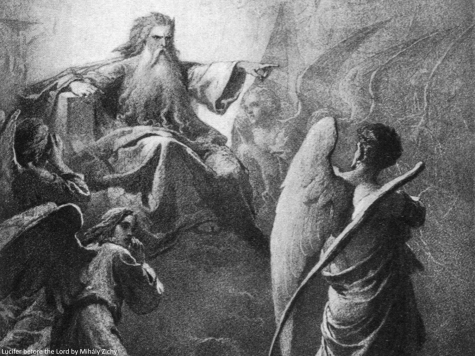Who Really Is Lucifer?
 When you hear the name Lucifer, you may think of Tom Ellis and his iconic British accent from the television series ‘Lucifer’. That, or you might picture a negative being who is synonymous with the Devil or Satan. Despite this common misconception (which is also perpetuated in the popular show), Lucifer is actually a separate entity, and not an inherently bad one either.
When you hear the name Lucifer, you may think of Tom Ellis and his iconic British accent from the television series ‘Lucifer’. That, or you might picture a negative being who is synonymous with the Devil or Satan. Despite this common misconception (which is also perpetuated in the popular show), Lucifer is actually a separate entity, and not an inherently bad one either.
The name Lucifer means light-bringer in Latin. To the Romans, it was a name for Venus, hence why Lucifer is also referred to as the ‘morning-star’ (Venus can be seen in the morning with the appearance of a bright star).
If we look at Christianity, Lucifer was somewhat of a mistranslation which has now been abandoned in modern bibles. The verse often brought into question is Isaiah 14:12, which states “How you are fallen from heaven, O Day Star, son of Dawn! How you are cut down to the ground, you who laid the nations low!” In those older bibles, Lucifer was used in the place of ‘O Day Star’, but is now replaced with – depending on the edition – day star, morning star, or shining star. The person this verse is actually talking about is the King of Babylon. The real identity of this king (beyond being a ruler of Babylon) is debated, but many think that the king is simply a personification of malevolence and that there was no intention to describe a specific person. Another bible verse used to associate Lucifer with evil was Luke 10:18. Once people began to assume that Lucifer was a fallen angel, a connection was made to this excerpt: “…I watched Satan fall from heaven like a flash of lightning…”. This line caused Lucifer to become directly synonymous with Satan and enhanced his fallacious position as a symbol of negativity.
Rudolf Steiner, a 19 th century Austrian philosopher and founder of the spiritual movement Anthroposophy, believed that Lucifer was a spiritual force and being who incarnated somewhere in Asia 3000 years before Christ. To him, Lucifer symbolised imagination and fantasy, and was the opposition to Ahriman, a spiritual force and being who is predicted to incarnate circa 3000 AD. Lucifer was Steiner’s explanation for the immense creativity found in the mythology of the time, like that of the ancient Greeks and Egyptians, for example.
Lucifer is also the obvious subject of Luciferianism, but this does not mean that all Luciferians view Lucifer as an actual being. For some, Lucifer is more of an archetype or energy that embodies the Luciferian philosophy. This is why Luciferianism is often divided into two streams: theistic and atheistic. If we were to look at demonolatry, a practice separate from Luciferianism, Lucifer and Satan are also seen as two different entities. Lucifer is the air elemental, while Satan represents the whole.
So, who really is Lucifer then? Of course, there is no definitive answer – as with essentially all mythological characters – but what can be concluded is that the linking of the Christian Satan/Devil to Lucifer is simply incorrect and rather slanderous to his reputation if you ask me.







